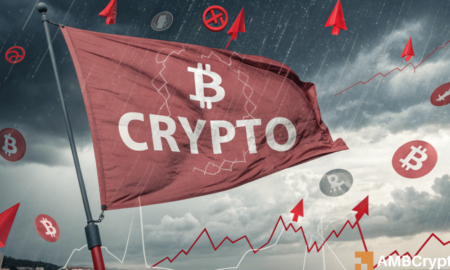The Decline of Ethereum’s Active Addresses: Analyzing Trends and Implications for the Network
Ethereum, the second-largest cryptocurrency by market capitalization, has experienced a significant drop in its active addresses since the start of the year. The number of active addresses has plummeted from approximately 525,000 to about 333,000. This drastic decline is eerily aligned with a weakening price trend, as Ethereum’s value hovers near $1,800 at the time of writing. This downward trajectory indicates a notable reduction in user engagement and transactional activity on the Ethereum network. Understanding the reasons behind this drop is crucial for investors and users alike, as it has far-reaching implications for Ethereum’s future.
Recent analysis of Ethereum’s performance reveals a startling reduction in its total fees burned, a phenomenon that mirrors the decrease in active addresses. Lower burn rates suggest a decline in on-chain activity, potentially signaling reduced congestion on the network or fewer high-priority transactions. As fewer transactions occur, the overall momentum of the Ethereum network is affected, leading to broader concerns about its utility. This decline in activity is crucial as it reflects the waning interest among users and could set the stage for a future where Ethereum’s growth stalls unless significant changes are made.
One of the pivotal moments in Ethereum’s ongoing evolution was the implementation of the Dencun upgrade, which was introduced to lay the groundwork for long-term sustainability of the network. However, the aftermath of this upgrade has stirred debates within the community, primarily because Ethereum’s total supply has begun to surge. This shift presents a stark contrast to the period before Ethereum’s Merge—when the network experienced a deflationary trend characterized by a declining supply. Post-Merge, however, an inflationary trend has emerged, raising important questions about the effectiveness of the recent changes.
The Merge initially sparked optimism among Ethereum supporters due to its deflationary properties. It successfully reduced the issuance rate of new tokens while simultaneously increasing the rate at which tokens were burned. The balance appeared favorable, as the number of tokens being burned exceeded those created. However, after the Dencun upgrade, this balance was disrupted. As transaction volumes have dwindled and overall network activity decreased, the burn mechanism has struggled to keep pace with inflation. The result has been a return to an inflationary environment, causing a ripple effect on the confidence of users and investors alike.
While Ethereum’s Dencun upgrade aimed to bolster the network’s resilience, it unintentionally led to heightened inflation during a period of diminished on-chain activity. This unintended consequence has caused the post-Merge reality to deviate significantly from the originally intended deflationary vision. Such a shift raises concerns about the long-term viability of Ethereum’s economic model and its capacity to sustain growth without revisiting its foundational mechanisms. The challenge lies in ensuring that future upgrades can effectively manage inflation while encouraging increased transactional activity across the network.
Looking ahead, Ethereum’s roadmap includes the anticipated Pectra upgrade set for release on April 30th. The community holds its breath, hoping that this upcoming update will strike a better balance between sustainability and inflation control. The effectiveness of future upgrades will be closely monitored, as the network seeks to regain its momentum in an increasingly competitive landscape. If Ethereum can successfully align its economic models with practical user engagement, it may very well restore its once-thriving ecosystem and solidify its position as a leader in blockchain technology.
In conclusion, the recent decline in Ethereum’s active addresses and the subsequent rise in inflation pose significant challenges for the network. Understanding these trends is vital for all stakeholders involved, from developers to users. As Ethereum prepares for its next upgrades, the focus must remain on balancing network sustainability with robust user engagement to prevent further declines and ensure a prosperous future.
















